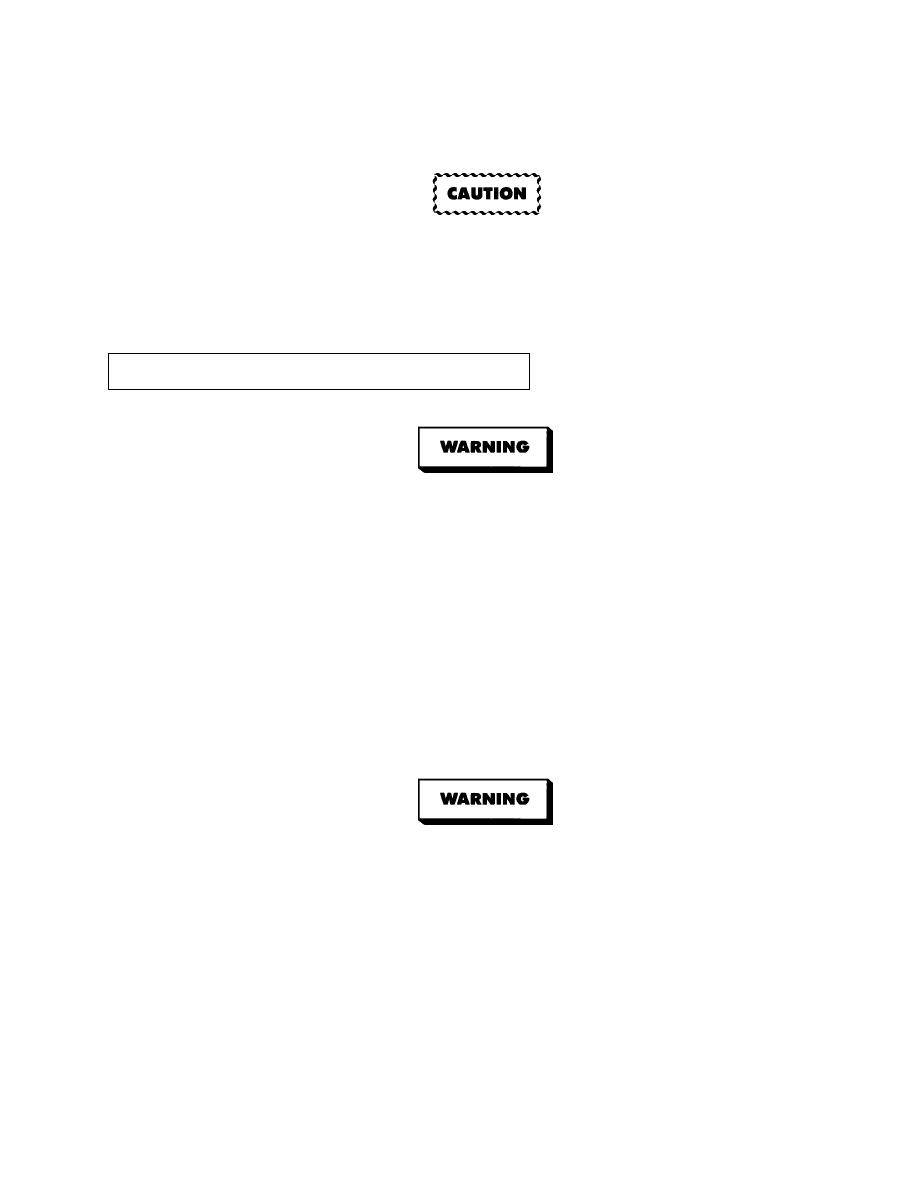 |
|||
|
|
|||
|
|
|||
| ||||||||||
|
|
 TM 9-2320-364-34-1
d. Removing Seals. Be sure all traces of oil, gaskets, and sealants are removed from components. When
possible, use wood or plastic probes and scrapers to prevent damage to machined surfaces.
Do not use tape to close off fuel or oil openings. Sticky surface of tape can mix with fuel and
oil and cause engine malfunctions.
e. Parts Protection. To keep dust, dirt, moisture, and other objects out of internal parts of systems or
components, cap or tape over all open tubes, hoses, fittings, air lines and component openings as soon as part is
removed. Wrap all removed parts in clean paper or dip parts in preservation oil.
Drycleaning Solvent (P-D-680) is TOXIC and flammable. Wear protective goggles, face
shield, and gloves; use only in a well-ventilated area; avoid contact with skin, eyes, and
clothes, and do not breathe vapors. Keep away from heat or flame. Never smoke when
using solvent. The flashpoint for Type II Drycleaning Solvent is 140 degrees F (60 degrees
C) and Type III Drycleaning Solvent is 200 degrees F (93 degrees C). Failure to do so may
result in injury or death to personnel.
If personnel become dizzy while using cleaning solvent, immediately get fresh air and
medical help. If solvent contacts skin or clothes, flush with cold water. If solvent contacts
eyes, immediately flush eyes with water and get immediate medical attention.
Never use fuel to clean parts. Fuel is highly flammable. Serious injury to personnel could
result if fuel ignites during cleaning.
a. Cleaning Solvents. Use only approved cleaning solvents to clean parts. Drycleaning solvent, P-D-680, is
commonly used. Always work in a well-ventilated area.
Compressed air used for cleaning purposes will not exceed 30 psi (207 kPa). Use only with
effective chip guarding and personal protective equipment (goggles/shield, gloves, etc). Failure
to comply may result in injury to personnel.
b. Removing Deposits. Soak parts in dry cleaning solvent, and wash away deposits by flushing or spraying.
When necessary, brush with a soft bristle brush (not wire) moistened in solvent. Use compressed air to dry parts,
except bearings, after cleaning. Bearings must drip and air dry.
c. Tools. Do not use wire brushes, abrasive wheels, or compounds to clean parts unless specifically approved in
the detailed procedures. Parts may be scratched or altered, and may weaken a highly stressed part.
2-851
|
|
Privacy Statement - Press Release - Copyright Information. - Contact Us |